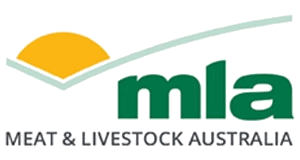A year in review: the Australian cattle market
Key points:
- Stability has returned to the cattle market, reflecting the balancing act between supply and demand.
- Market confidence has continued to trend upward despite the weather conditions in Victoria and SA.
- Slaughter has been very consistent and remains the highlight of the year.
After a turbulent 2023, the cattle market got back on its feet during 2024. The beef herd has now reached maturity, leading to more beef in domestic and international markets. 2024 has been marked by three key themes:
- Stability
- Confidence
- Stronger supply.
Stability
Without a doubt, the cattle market has stabilised – reflecting the balancing act between supply and demand which are influenced by weather, overall confidence and increased female slaughter, among many other factors.
Prices over the last 12 months have lifted by 20–39%, indicating the recovery of the market from the challenging conditions in 2023. The current prices are now tracking 1–20% below the 10-year average and reflect the substantial recovery the cattle market has shown over a short period of time.
Over the last year, Australia experienced two different seasonal conditions split across the south and the north. The seasonal conditions in pastoral regions in SA and western Victoria drove increased turn-off. As a result, NSW and Queensland producers benefited from this turn-off due to their favourable seasonal conditions.
See also: A year in review: the Australian sheep and lamb market
Confidence
Market confidence has certainly shifted from last year – many would say last year was the first time in a long time that producers made a decision based on a forecast rather than actual weather events. This confidence influenced buying behaviour; however, despite poor conditions in Victoria and SA, prices remained strong due to demand from NSW and Queensland producers.
All eyes have been on the global market, particularly the United States, which has recorded the lowest cattle herd in about 70 years. This has driven high cattle prices and thus increased the volume exported.
Stronger supply
Supply has remained steady over the past 12 months, with weekly slaughter capacity averaging 130,000 head a week according to the National Livestock Reporting Service (NLRS). The second half of the year averaged slightly higher at 140,000 head a week. Slaughter in 2024 is tracking just above the 10-year average and is around 16% above the 5-year average.
Processing capacity has increased by around 20% over the past four years, indicating the impact of the Pacific Australian Labour Mobility (PALM) scheme and other labour schemes which have significantly grown processing capacity.
Attribute to Emily Tan, MLA Market Information Analyst
